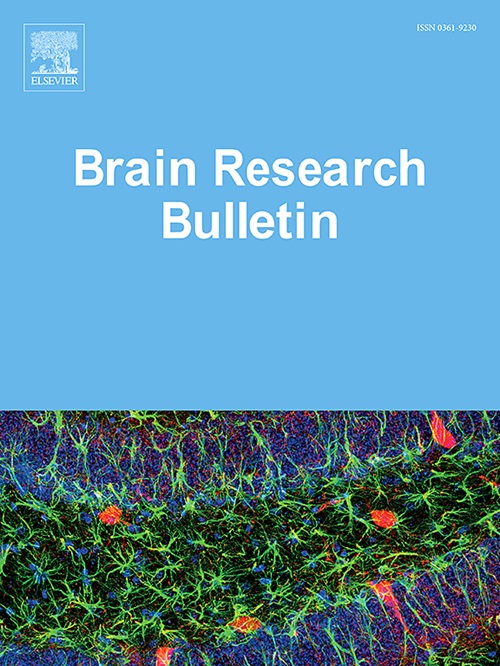多发性硬化症中星形胶质细胞的双面:平衡保护和病理
IF 3.5
3区 医学
Q2 NEUROSCIENCES
引用次数: 0
摘要
多发性硬化症(MS)是一种以中枢神经系统(CNS)脱髓鞘和神经退行性变为特征的慢性自身免疫性疾病,主要影响年轻人,明显以女性为主。虽然MS的发病机制涉及外周免疫细胞和中枢神经胶质细胞之间复杂的相互作用,但星形胶质细胞-最丰富的胶质细胞-在疾病进展中起双重作用。传统上分为促炎A1和神经保护A2表型,最近的单细胞和空间转录组学显示,人类星形胶质细胞表现出超越这种二元范式的连续状态。在多发性硬化症中,反应性星形胶质细胞通过破坏血脑屏障(BBB)、促进谷氨酸兴奋性毒性和向自身反应性T细胞呈递抗原来促进神经毒性。相反,它们也通过神经营养因子释放(如BDNF、CNTF)和髓鞘再生来支持修复。新兴疗法如富马酸二甲酯(DMF)和fingolimod调节星形胶质细胞的反应性,靶向氧化应激和鞘氨醇-1-磷酸受体,以减轻神经炎症。然而,将小鼠A1/A2概念转化为人类MS仍然存在挑战,因为人类星形胶质细胞表现出受区域微环境和疾病分期影响的异质、情境依赖性反应。包括空间多组学在内的先进技术强调星形胶质细胞-小胶质细胞串扰和代谢重编程是MS病理的关键驱动因素。本文综合了目前关于星形胶质细胞异质性的证据,它们在多发性硬化症中的双面作用,以及星形胶质细胞靶向策略的治疗潜力,提倡采用精确的方法来解释人类特异性星形胶质细胞生物学。未来的研究必须优先考虑以人类为中心的生物标志物和动态建模,以弥合实验发现和临床应用之间的差距。本文章由计算机程序翻译,如有差异,请以英文原文为准。
The janus face of astrocytes in multiple sclerosis: Balancing protection and pathology
Multiple sclerosis (MS) is a chronic autoimmune disorder characterized by demyelination and neurodegeneration in the central nervous system (CNS), predominantly affecting young adults with a notable female predominance. While the pathogenesis of MS involves complex interactions between peripheral immune cells and CNS glia, astrocytes—the most abundant glial cells—play a dual role in disease progression. Traditionally classified into pro-inflammatory A1 and neuroprotective A2 phenotypes, recent single-cell and spatial transcriptomics reveal that human astrocytes exhibit a continuum of states beyond this binary paradigm. In MS, reactive astrocytes contribute to neurotoxicity by disrupting the blood-brain barrier (BBB), promoting glutamate excitotoxicity, and presenting antigens to autoreactive T cells. Conversely, they also support repair through neurotrophic factor release (e.g., BDNF, CNTF) and remyelination. Emerging therapies like dimethyl fumarate (DMF) and fingolimod modulate astrocyte reactivity, targeting oxidative stress and sphingosine-1-phosphate receptors to mitigate neuroinflammation. However, challenges persist in translating murine A1/A2 concepts to human MS, as human astrocytes display heterogeneous, context-dependent responses influenced by regional microenvironments and disease stages. Advanced techniques, including spatial multi-omics, highlight astrocyte-microglia crosstalk and metabolic reprogramming as key drivers of MS pathology. This review synthesizes current evidence on astrocyte heterogeneity, their Janus-faced roles in MS, and the therapeutic potential of astrocyte-targeted strategies, advocating for precision approaches that account for human-specific astrocyte biology. Future research must priorities human-centric biomarkers and dynamic modelling to bridge the gap between experimental findings and clinical applications.
求助全文
通过发布文献求助,成功后即可免费获取论文全文。
去求助
来源期刊

Brain Research Bulletin
医学-神经科学
CiteScore
6.90
自引率
2.60%
发文量
253
审稿时长
67 days
期刊介绍:
The Brain Research Bulletin (BRB) aims to publish novel work that advances our knowledge of molecular and cellular mechanisms that underlie neural network properties associated with behavior, cognition and other brain functions during neurodevelopment and in the adult. Although clinical research is out of the Journal''s scope, the BRB also aims to publish translation research that provides insight into biological mechanisms and processes associated with neurodegeneration mechanisms, neurological diseases and neuropsychiatric disorders. The Journal is especially interested in research using novel methodologies, such as optogenetics, multielectrode array recordings and life imaging in wild-type and genetically-modified animal models, with the goal to advance our understanding of how neurons, glia and networks function in vivo.
 求助内容:
求助内容: 应助结果提醒方式:
应助结果提醒方式:


